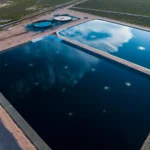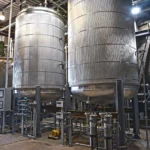Water midstream infrastructure is evolving from static systems to dynamic, responsive networks—and data is driving that change. As the volume and variety of water-related data increases, predictive analytics is becoming a crucial tool in building smarter, more agile water infrastructure that meets the demands of modern oilfield operations.
This blog builds on the discussion from our recent episode of Oilfield Water 360: The Water Infrastructure Revolution – Optimizing for Produced Water Reuse, where leaders Michael Skarke and Danny Grant explore the growing influence of AI and data in shaping tomorrow’s water logistics.
A New Era of Water Data
The digital transformation of oilfield water has brought an explosion of usable data—from flow rates and pressure readings to treatment performance and pipeline utilization. Water midstream operators are collecting more data than ever before, and that data is becoming more organized, accessible, and actionable.
“We’re not just looking at data in hindsight anymore,” says Grant. “Now we’re starting to use it to make decisions proactively—how to optimize flow paths, when to move volumes, and where to invest in infrastructure next.”
Infrastructure Planning Powered by AI
In the past, new disposal wells or treatment facilities were often built based on historical demand or proximity to drilling activity. Today, operators are taking a more strategic approach—using historical data, real-time inputs, and predictive models to guide long-term planning.
“One of the most exciting things we’re working on is using AI to help us determine where to put the next facility,” Skarke explains. “It’s not just about today’s activity—it’s about seeing five moves ahead and building for what’s coming.”
Predictive analytics enables teams to model growth scenarios, understand changing completion patterns, and avoid overbuilding or underutilizing critical infrastructure.
The Rise of Integrated Water Networks
As operators scale up and consolidate acreage, the need for interconnected water systems grows. These integrated networks require a more advanced approach to balancing supply and demand, matching treatment capacity to frac schedules, and coordinating between multiple producers.
Predictive analytics is the engine behind this coordination—forecasting where water will be needed, how it will move, and what constraints may arise along the way.
“You can’t just react anymore,” says Grant. “The networks are too big, and the volumes are too high. We’re building systems that let us anticipate and plan, not just respond.”
The Road Ahead
The future of water midstream is digital, predictive, and integrated. As AI and analytics continue to mature, they will unlock even more efficiency across the full lifecycle of water—from sourcing to reuse.
Water midstream isn’t just about pipes and pumps anymore. It’s about data-driven decisions that reduce costs, improve sustainability, and drive smarter growth in oilfield operations.
Want to dig deeper?
Watch our episode of Oilfield Water 360: The Water Infrastructure Revolution, featuring Michael Skarke and Danny Grant, to hear more about the role of data and digital strategy in shaping the next era of oilfield water.









